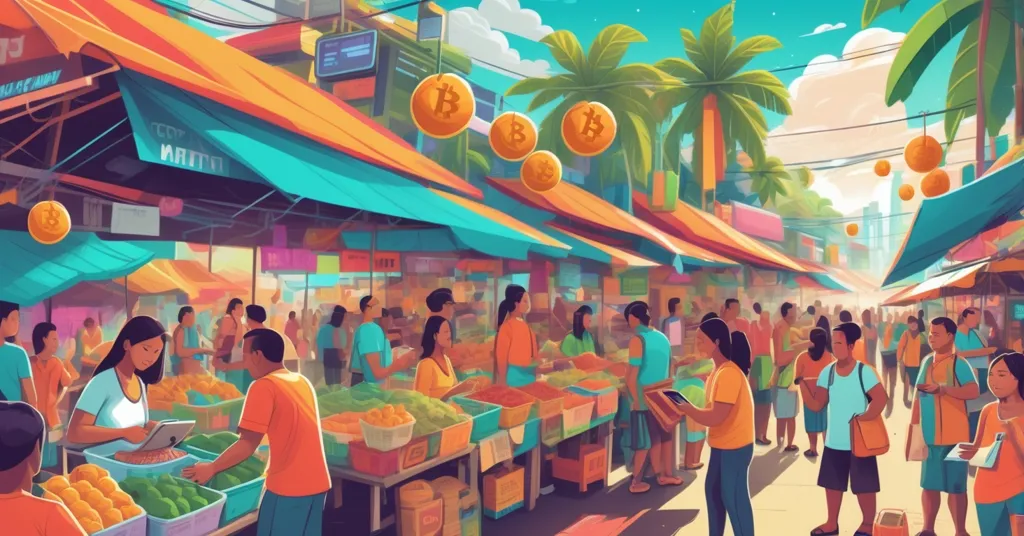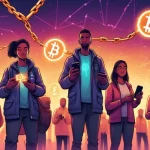PH Blockchain Week 2025: Real-World Tech and Community Impact in the Philippines

PH Blockchain Week 2025: Communities and Tech Collide in the Philippines
Philippine Blockchain Week (PBW) 2025, launched on June 10 at the SMX Convention Center in Pasay City, drew thousands of global attendees to witness a bold step forward for blockchain technology. Far from the usual crypto hype, this event zeroed in on tangible solutions and community impact, positioning the Philippines as a serious contender in the decentralized tech arena.
- Main Focus: Real-world blockchain applications, sidelining speculative noise for financial inclusion and societal trust.
- Major Reveal: Philippine Blockchain Report 2025, mapping the nation’s digital and blockchain evolution.
- Key Debates: Digital wallets as social tools, AI’s role in blockchain, and the memecoin controversy.
A Decade of Blockchain Roots in the Philippines
The Philippines has been experimenting with blockchain since 2014, initially targeting remittances—a critical lifeline for a nation where overseas Filipino workers contribute roughly 9-10% of GDP annually. With an archipelagic geography that often leaves rural areas cut off from traditional banking, blockchain’s ability to enable fast, low-cost, borderless transactions was a game-changer. The Bangko Sentral ng Pilipinas (BSP) laid regulatory groundwork as early as 2017, licensing platforms like Coins.ph as Virtual Currency and Electronic Money Issuers. This gave startups such as Satoshi Citadel Industries (SCI) and BloomSolutions room to innovate, while heavyweights like Union Bank of the Philippines and the Philippine Digital Asset Exchange (PDAX) later integrated blockchain into their operations. PBW 2025, spearheaded by the Blockchain Council of the Philippines (BCP) under Dr. Donald Lim, celebrated this journey with the release of the Philippine Blockchain Report 2025. Presented by Carlo Chen-Delantar of Gobi Partners, the report—backed by firms like Gorriceta Africa Cauton & Saavedra and Tether—details how blockchain has morphed from a niche financial tool into a multi-sector powerhouse.
Real-World Impact: From Gaming to Street Food
Blockchain’s reach in the Philippines now extends far beyond remittances. Play-to-earn (P2E) gaming, led by Yield Guild Games (YGG) since 2020, turned gamers into earners, especially during economic downturns when traditional jobs vanished. For the uninitiated, P2E lets players earn cryptocurrency or digital assets by completing in-game tasks, a model that resonates in a country with a young, tech-savvy population. Digital identities are another triumph—84 million have been issued, cutting through bureaucratic red tape to improve access to government services. Enterprise solutions and transportation systems are also getting a blockchain makeover, proving the tech’s versatility, as highlighted in discussions on real-world applications of blockchain.
Then there’s the quirky yet inspiring “Fishblock” project, backed by the Department of Information and Communications Technology (DICT). Imagine buying street food with crypto via a QR code scan, where each transaction ties to an exclusive non-fungible token (NFT)—a unique digital collectible proving ownership or membership. Actor and chef Marvin Agustin, driving Fishblock, envisions it as blockchain for the masses, one tasty bite at a time. While adoption is still small-scale, critics question if such niche experiments can scale without better rural internet access. Still, it’s a daring glimpse of how blockchain can touch everyday life. The 2020 pandemic further accelerated this shift, pushing digital payments into the mainstream as mobile wallets like Coins.ph swelled to over 16 million users. This wasn’t just tech adoption; it was resilience in action.
Barriers to Mass Adoption: Complexity and Skepticism
Despite these strides, blockchain remains a hard sell for many Filipinos. Cryptocurrencies largely attract P2E gamers and speculative traders, while the average person questions their practical value beyond volatile price swings. The tech itself intimidates non-experts—terms like “gas fees” (transaction costs akin to a highway toll) and “seed phrases” (a master password to recover your digital wallet) create barriers. PBW 2025 panels tackled this head-on, arguing that digital wallets must drive blockchain adoption to mainstream use. Forget airdrops—free token giveaways that often just encourage “HODLing” (holding on for dear life) without real engagement. Jason Dominique, CEO of Onchain, cut through the fluff:
“Airdrops is not a really good way to get early adopters in. If we want to make it easy for people to get in…we need [to come] from a point of discovery.”
Jonathan Low, CEO of Biptap, pushed the idea further, suggesting wallets transform into social identities. Picture a wallet not as a vault for Bitcoin or Ethereum, but as a digital passport linking to your online life, stripping away tech jargon for everyday usability. This pivot could finally bridge the gap for those who see blockchain as a geek’s toy rather than a daily tool.
AI and Blockchain: Partners, Not Replacements
Artificial Intelligence (AI) emerged as a hot topic at PBW 2025, framed as a booster for blockchain rather than a threat. Think of AI as a fraud detector, flagging suspicious moves in tokenized assets—digital items backed by blockchain, like NFTs—much like it spots odd credit card charges. It’s also powering smarter digital wallets and community tools. But there’s a flip side: over-reliance on algorithms could erode privacy, a core tenet of decentralization. Ian Utile, a PBW regular, urged attendees to stay grounded amid the buzzwords:
“Let’s not get so technical that we get away from humanity. If you spin yourself on tech talk, then you lose what actually matters, and what really matters is our purpose.”
He framed “tokenized” or “NFTs” simply as communities—exclusive or inclusive—and highlighted AI’s potential to scale them, provided we don’t lose the human touch. This balance of innovation and caution mirrors the ethos of effective accelerationism (e/acc), pushing tech forward with purpose. For deeper insights into this intersection, explore how blockchain and AI are shaping the Philippines.
Community and Culture: Blockchain as a Movement
PBW 2025 wasn’t just about tech—it was deeply rooted in Filipino resilience and community. Panels on women in blockchain, led by Gail Macapagal of Women in Blockchain of the Philippines and Aya De Quiroz of Azintafy, showcased how decentralized systems empower marginalized groups. Micro, small, and medium enterprises (MSMEs) are using blockchain to tap markets once out of reach. Cultural events like Chain Stars fused local identity with Web3, while Nexus Academia engaged students, planting seeds for future adoption. Congresswoman Hon. Richelle Singson captured the bigger picture:
“Blockchain isn’t just about digital assets or decentralized finance; it’s about rebuilding trust in systems—something many of our institutions critically need.”
Her call to treat PBW as a movement, not just an event, resonated with attendees, urging builders and policymakers to prioritize people over profits. Learn more about the event’s highlights at the official PBW 2025 site.
Memecoins: Fun Entry or Dangerous Trap?
Not all discussions were harmonious. Memecoins—joke tokens often tied to internet memes or celebrity names—ignited fierce debate, especially with recent launches like $TRUMP and $MELANIA linked to the Trump administration. At PBW’s Meme Fiesta, opinions clashed. Karen Kriska of Coinvesting Holding, dubbed the “Shitcoin Queen,” sees them as a playful entry to crypto, while Rik Krieger of Trust Wallet dismissed them as worthless in serious contexts. Jose Manuel Torres of Political Pump admitted they’re entertaining but warned of pitfalls. Let’s be real: most memecoins are digital trash, often outright scams or “rug pulls” (where creators vanish with investors’ funds). They’re a gamble, not the future of finance, and PBW hammered home the need for due diligence—do your own research (DYOR), because no one’s bailing you out. Check out community takes on $TRUMP and $MELANIA tokens.
The Bigger Picture: Innovation and Challenges
PBW 2025 went beyond panels, hosting the Innovation Expo for cutting-edge demos, Founders Arena for startup-VC matchmaking, and the Philippine Block Awards to honor pioneers. The “DECODED” theme wove in AI and cybersecurity, hinting at blockchain’s convergence with frontier tech across FinTech, healthcare, and beyond. For Bitcoin maximalists, the event echoed core values of financial sovereignty and trustless systems, especially in remittances and digital IDs. Yet, altcoins and platforms like Ethereum play crucial roles with smart contracts and tokenized communities—niches Bitcoin isn’t designed to fill. The Philippines’ regulatory model, balancing innovation with oversight, offers a blueprint for responsible growth, curbing scams while fostering disruption. Read more on how blockchain drives financial inclusion in the region.
Still, hurdles remain. Rural infrastructure gaps and tech complexity could stall progress. There’s also a darker risk: if big banks or centralized entities dominate blockchain adoption, the dream of decentralization could morph into just another controlled system. A street vendor in Manila using Fishblock told us, “It’s exciting, but I barely understand it—will it really help me, or just the big players?” That’s the crux. Blockchain must shed its speculative baggage and focus on utility to truly disrupt the status quo for the average Filipino. For a broader perspective, check out PBW 2025’s vision for tech and community.
Key Insights on Blockchain’s Path in the Philippines
- How far has blockchain come in the Philippines?
Since 2014, it’s reshaped remittances, issued 84 million digital IDs, and spread to gaming and projects like Fishblock, backed by startups and BSP regulations since 2017. - Why are digital wallets critical for wider adoption?
They’re becoming social identities, focusing on ease of use over tech hurdles, making blockchain relatable beyond crypto speculation or storage. - What’s AI’s role alongside blockchain?
AI boosts blockchain with fraud detection and smarter tools, but risks like privacy erosion need watching to keep decentralization intact. - Are memecoins a legit crypto gateway?
They’re a polarizing entry—fun for some, a scam risk for others. Personal research is non-negotiable to avoid devastating losses. - Can blockchain become truly mainstream here?
Real-world uses show promise, but technical barriers and rural connectivity issues must be solved to reach everyday Filipinos effectively.
PBW 2025 isn’t just a conference—it’s a rallying cry. The Philippines is showing blockchain can be more than a speculative gimmick; it’s a path to freedom, inclusion, and trust in a world starving for all three. But the journey demands simplicity, accessibility, and a ruthless stand against scams and hype. Let’s support local projects and builders pushing this tech forward with purpose, not promises. The future of finance and beyond is being coded right here—let’s make sure it serves the many, not the few.



